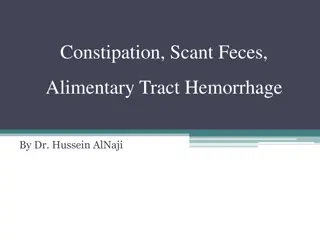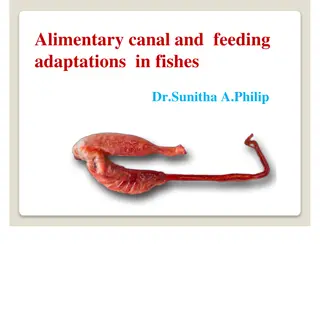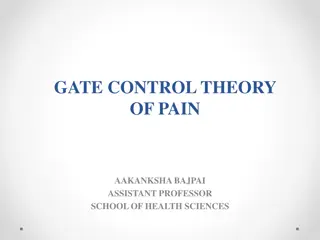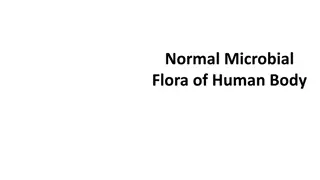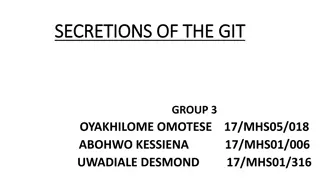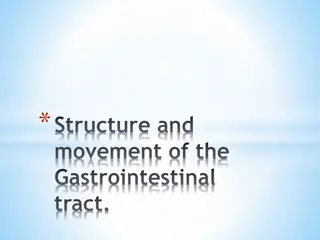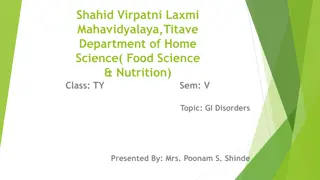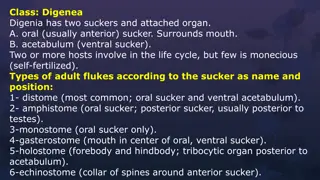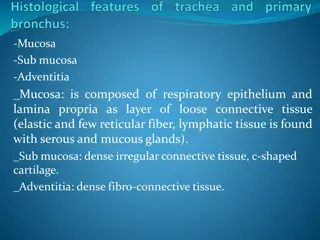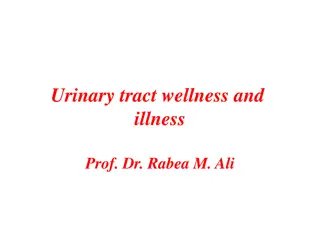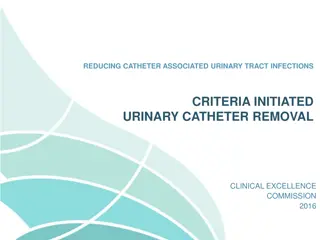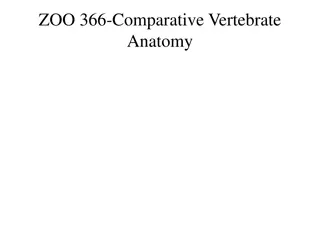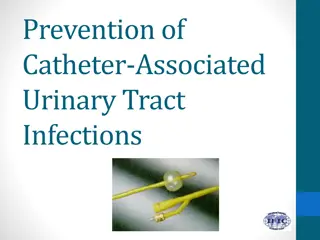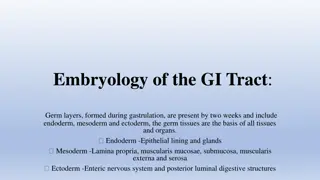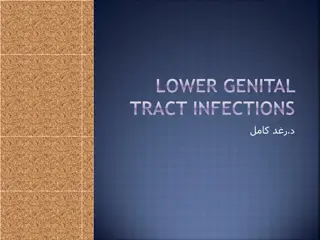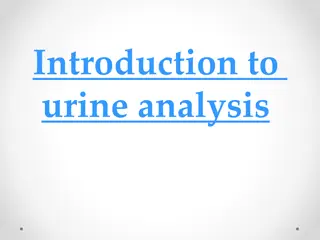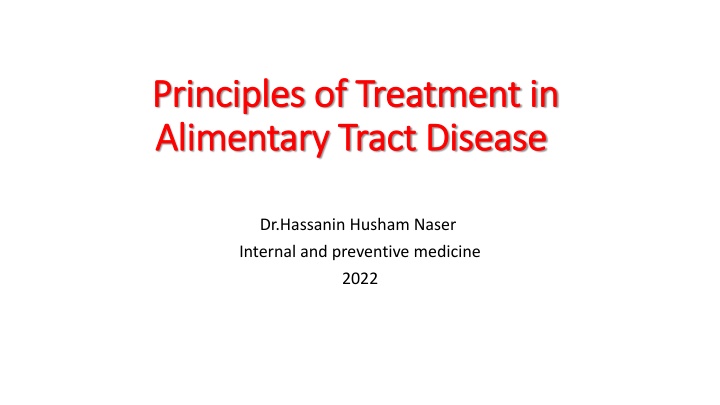
Principles of Treatment in Alimentary Tract Disease
Removal of the primary cause of the disease is essential in treating alimentary tract diseases. Supportive and symptomatic treatment focuses on relieving pain, correcting abnormalities, and reconstituting digestive flora as needed.
Download Presentation

Please find below an Image/Link to download the presentation.
The content on the website is provided AS IS for your information and personal use only. It may not be sold, licensed, or shared on other websites without obtaining consent from the author. If you encounter any issues during the download, it is possible that the publisher has removed the file from their server.
You are allowed to download the files provided on this website for personal or commercial use, subject to the condition that they are used lawfully. All files are the property of their respective owners.
The content on the website is provided AS IS for your information and personal use only. It may not be sold, licensed, or shared on other websites without obtaining consent from the author.
E N D
Presentation Transcript
Principles of Treatment in Principles of Treatment in Alimentary Tract Disease Alimentary Tract Disease Dr.Hassanin Husham Naser Internal and preventive medicine 2022
Principles of Treatment in Alimentary Tract Disease Removal of the primary cause of the disease is essential. Major part of the treatment of diseases of the alimentary tract is supportive and symptomatic. This is aimed at : 1-relieving pain and distension, 2-replacement of fluids and electrolytes, 3- correcting abnormal motility, 4-relieving tenesmus and reconstitution of the digestive flora if necessary.
1 1- - RELIEF RELIEF OF ABDOMINAL PAIN OF ABDOMINAL PAIN The relief of abdominal pain is of prime importance from a humane aspect, to prevent the animal from self-injury associated with falling and throwing itself against a wall or other solid objects, and to allay the concerns of the owner. No single analgesic is completely satisfactory for every situation. Nonnarcotic and narcotic analgesics that are in general use and the analgesics used in the important subject of equine colic.
2 2- - RELIEF OF DISTENSION RELIEF OF DISTENSION The relief of distension of the gastrointestinal viscera is a critical principle to minimize shock and to prevent rupture of the viscus. Relief of distension of the stomach of the horse with colic is accomplished by nasogastric intubation. Distension caused by bloat in cattle can be relieved by stomach tube or trocarization of the rumen.
Relief of distension of the large colon by percutaneous or per rectal trocarization is used in horses. Either technique can be useful in relieving distension and signs of abdominal pain, but potential complications include peritonitis, infection, and abscessation at the site of trocarization.
-Relief of distension may be possible by medical means alone with the use of laxatives and purgatives when there is accumulation of ingesta without a physical obstruction. -Surgical intervention is often necessary when the distension is associated with a physical obstruction. -In functional distension (paralytic ileus), relief of the atony or spasm can be effected by the use of drugs such as metoclopramide. Distension caused by intestinal or gastric accidents requires surgical correction.
3 3- -REPLACEMENT OF FLUIDS AND ELECTROLYTES REPLACEMENT OF FLUIDS AND ELECTROLYTES Replacement of fluid and electrolytes lost in gastrointestinal disease is one of the most important principles of treatment. In gastric or intestinal obstruction, or when diarrhea is severe, it is necessary to replace lost fluids and electrolytes by the parenteral administration of large quantities of isotonic glucose saline or other physiologically normal electrolyte solutions. The amount of fluid lost may be very large and fluids must be given in quantities to replace losses and to support continuing losses and maintenance requirements
. In acute, severe dehydration in horses, such as occurs in acute intestinal obstruction, the amount of fluid required before and during surgery ranges from 50 to 100 mL/kg BW per 24 hours. It is critical that administration of fluid is commenced at the earlie possible time because of the need to maintain homeostasis. In young animals the need is much greater still and a mounts of 100 mL/kg BW, given slowly intravenously, are commonly necessary and not excessive. The treatment of shock includes the administration of fluids, plasma or blood, and nonsteroidal antiinflammatory drugs (NSAIDs). The use of intravenous administration of hypertonic saline followed by the ingestion of large quantities of water by the animal is another aspect of fluid therapy in gastrointestinal disease.
4 4- - CORRECTION OF ABNORMAL MOTILITY CORRECTION OF ABNORMAL MOTILITY A A- - INCREASED MOTILITY INCREASED MOTILITY When motility is increased, the administration of atropine or other spasmolytics such as dipyrone or proquamezine is usually followed by the disappearance of the abdominal pain and a diminution of fluid loss. Meperidine, butorphanol, and pentazocine inhibit regular cyclic myoelectric activity in the jejunum. There is a need for some scientific clinical investigation into the desirability of treating intestinal hypermotility, if it does exist in enteritis, for example, and the efficacy of anticholinergics. Loperamide has an antidiarrheal effect in experimentally induced diarrhea in calves, but the mechanism of action does not involve changes in intestinal motility.
B B- -DECREASED MOTILITY DECREASED MOTILITY When gastrointestinal motility is decreased, the usual practice is to administer parasympathomimetic drugs or purgatives, usually combined with an analgesic. Prokinetic drugs such as metoclopramide hydrochloride and cisapride monohydrate increase the movement of ingesta through the gastrointestinal tract. They are useful because they induce coordinated motility patterns.
Metoclopramide Metoclopramide Metoclopramide, acting in the upper gastrointestinal tract, increases acetylcholine release from neurons and increases cholinergic receptor sensitivity to acetylcholine. It is a dopamine antagonist and stimulates and coordinates esophageal, gastric, pyloric, and duodenal motor activity. It increases lower esophageal sphincter tone and stimulates gastric contractions, while relaxing the pylorus and duodenum. This results in accelerated gastric emptying and reduced esophageal reflux. The transit time of ingested material from the duodenum to the ileocecal valve is reduced because of increased jejunal peristalsis.
. It has little or no effect on colonic motility. The pharmacokinetics of metoclopramide in cattle has been studied Metoclopramide crosses the blood-brain barrier, where its dopamine antagonist activity at the chemoreceptor trigger zone can result in an antiemetic effect. It can also result in involuntary activity including tremors, restlessness. Indications for metoclopramide include reflux esophagitis and gastritis, chronic gastritis associated with delayed emptying, abomasal emptying defects in ruminants, gastric stasis following gastric dilatation and volvulus surgery, and postoperative ileus. It is contraindicated in animals with physical obstruction of the gastrointestinal tract.
Cisapride Cisapride Cisapride promotes gastrointestinal motility by enhancing the release of acetylcholine from postganglionic nerve endings of the myenteric plexus. It is more potent and has broader prokinetic activity than metoclopramide by increasing the motility of the colon as well as the esophagus, stomach, and small intestine. It is does not have dopaminergic effects and does not have either the antiemetic or the extrapyramidal effects of metoclopramide. Cisapride is useful for the treatment of gastric stasis, gastroesophageal reflux, and postoperative ileus. In horses, it increases left dorsal colon motility and improves ileocecal junction coordination.
Xylazine Xylazine and Naloxone and Naloxone Although xylazine is used for alleviation of visceral pain in horses and cattle, it is not indicated in cecal dilatation in cattle because it reduces the myoelectric activity of the cecum and proximal loop of the ascending colon. Naloxone, a widely used opiate antagonist with a high affinity for -receptors, is also not indicated for medical treatment of cecal dilatation when hypomotility must be reversed
Bethanechol Bethanechol and Neostigmine and Neostigmine Bethanechol is a methyl derivative of carbachol and classified as a direct-acting cholinomimetic drug. Its action is more specific on the gastrointestinal tract and urinary bladder. Neostigmine, a cholinesterase inhibitor, is an indirect-acting cholinergic drug with motor-stimulating activities but only on the gastrointestinal tract. intramuscularly
RELIEF OF TENESMUS RELIEF OF TENESMUS Tenesmus can be difficult to treat effectively. Long-acting epidural anesthesia and sedation are in common use. Combinations of xylazine and lidocaine may be used. Irrigation of the rectum with water and the application of topical anesthetic in a jelly-like base are also used.
RECONSTITUTION OF RUMEN FLORA AND CORRECTION RECONSTITUTION OF RUMEN FLORA AND CORRECTION OF ACIDITY OR ALKALINITY OF ACIDITY OR ALKALINITY When prolonged anorexia or acute indigestion occurs in ruminants, the rumen flora may be seriously reduced. In convalescence, the reconstitution of the flora can be hastened by the oral administration of a suspension of ruminal contents from a normal cow, or of dried ruminal contents, which contain viable bacteria and yeasts and the substances necessary for growth of the organisms. The pH of the rumen affects the growth of rumen organisms, and hyperacidity (such as occurs on overeating of grain), or hyperalkalinity (such as occurs on overeating of protein-rich feeds), should be corrected by the administration of alkalinizing or acidifying drugs as needed.


